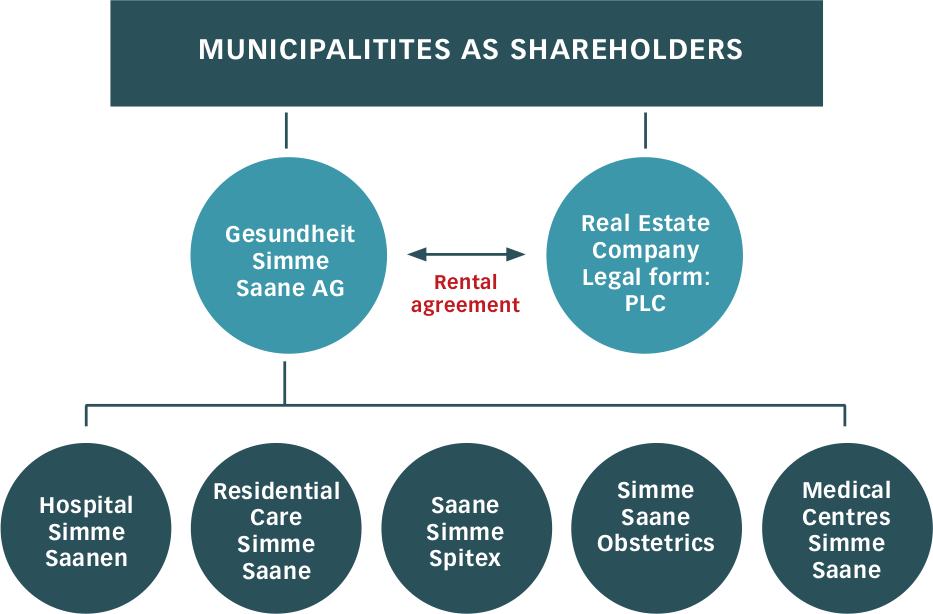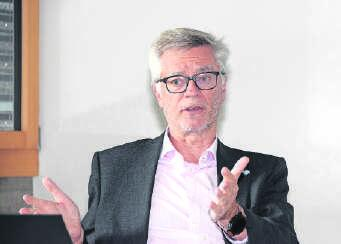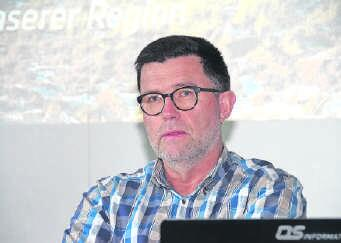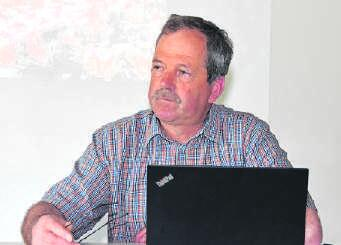Municipalities might become owners of the hospital
08.07.2021 Local NewsGesundheit Simme Saane AG (GSS) wants to secure the long-term basis for the existence of the Zweisimmen hospital and primary care in the Simmental and Saanenland with the concept Gesundheitscampus Simme Saane. In November, the population is to confirm the direction taken in a consultative vote. The final referendum is planned for 2022.
At the beginning of June, the GSS provided information on the status of the work, the challenges and the time frame.
Gesundheitscampus Simme Saane with hospital
“We want to take the leade in integrative care in the region into our own hands,” emphasised Stephan Hill, president of the GSS. “We want to build a house and call it Gesundheitscampus Simme Saane”, he added. The concept brings five areas together under the umbrella of GSS: the Simme Saane hospital (yet to be founded), Simme Saane residential care, Saane Simme Spitex as well as Simme Saane obstetrics. Outpatient medical centres would only be founded if there were no sufficient offers in primary health care from private providers.
The GSS is responsible for the strategic management of these units on behalf of the shareholder municipalities.
Spital Simme Saane AG
Spital Simme Saane AG (SSS), which has yet to be founded, is an independent legal entity “wholly owned by GSS and thus owned by the communities in the Obersimmental and Saanenland.” SSS is to take over the inpatient and outpatient services of Spital STS AG at the Zweisimmen site and ensure operations through a cooperation agreement with STS.
This is in line with Spital STS’s wish to no longer be on the front line with the hospital, but to hand it over to the region, Hill explained. This means, he said, that the GSS can have a say in adjustments to the range of services. “We also want to stand out as a training and further education centre for medical and paramedical professions,” Hill said. “And we also want to provide services for residential care.”
Hospital: basic package remains
According to the concept, the current medical offer will essentially remain the same with the basic package of internal medicine, surgery, outpatient consultations, 24-hour emergency during 365 days, dialyses, consultation hours, etc. Hill sees a certain potential with regard to consultation hours.
Residential care, Spitex, obstetrics
Residential care, so the Alterswohnen STS AG, is also to be integrated. According to the concept, Alterswohnen will become the property of the municipalities via GSS. “We want to take over all activities and work closely with the hospital and Spitex, especially in care work,” Hill explained. We want to do joint staff planning and we believe we can create an attractive and innovative environment for care workers.” Spitex is also to be integrated but only in terms of management, as Hill specified. “All the companies have very good operational managements, and we don’t want to change anything on this level.”
The obstetrics department is also to be integrated. On the one hand, the deficit will be defrayed, and on the other hand, the maternity unit will be physically integrated into the new or renovated hospital building. A cooperation agreement with the STS and the fmi shall regulate the cooperation in emergency situations.
Current status
The fourth round of negotiations with Spital STS AG and the Health, Social and Integration Directorate (GSI) is pending. Spital STS AG does not want to develop a new building or oversee the conversion of the current hospital. The building owner should be a real estate company yet to be founded under the umbrella of the shareholder municipalities. STS confirmed that it is prepared to pay an annual fixed amount of CHF 2.5m towards the deficit – as long as the canton also contributes a share. The GSI had signalled that it is ready for talks if the deficit turned out to be higher than the projected CHF 5m to 6m.
The integration of Alterswohnen AG will be a challenge. “ STS is currently not prepared to put this area up for discussion,” Hill emphasised.
Spitex Simme Saane and Maternité Alpine are positive about the concept. “It is important for the region that the Simmental and the Saanenland speak with one voice in health policy, that they jointly determine where the path leads,” said Hill. Integrated care models across the entire care chain are being promoted by the canton. “This means that our concern is completely in line with what the canton is striving for.”
New building and conversion
“With the conversion or new construction of the hospital, we want to aim for a modular construction method so that we have the flexibility to make adjustments,” said Hill. And what is very important: “If the communities participate in the construction, they will also have a lasting value in terms of infrastructure.” The figures to calculate finances to operate the new hospital were taken from the building project Dr. House, which dates back to 2015. At the end of 2020, the hospital had a deficit CHF 5.5m. The STS has pledged a fixed deficit amount of CHF 2.5m, and the canton of Bern CHF 2m. “This means that the municipalities would have had to pay CHF 1m last year,” said Hill. If these figures remain, the municipalities would have to contribute an average of CHF 100 per inhabitant to the deficit every year.
In other cantons, it is already common for hospital care to be co-financed by municipalities, Hill explained, citing the Unterengadine Health Centre in Scuol as an example, which integrates the services from hospital to Spitex and old people’s home in a legal entity. He said the canton of Graubünden had contributed CHF 1.5m in 2019, while the municipality had made a deficit contribution of CHF 880,000. “In Sarganserland, municipalities are examining the acquisition of the Walenstadt hospital in order to avert a likely closure.”
Gesundheitscampus Simme Saane without hospital
Hill also presented the option without a hospital. This would include the Simme health centre, Simme Saanen residential care, Saane Simme Spitex, Simme Saane obstetrics and the health centre in Saanen as a subsidiary. “The variant is based on outpatient care, but we would like to implement the integration in exactly the same way,” says Hill. “We would offer primary and emergency care and outpatient specialist consultations.” Emergency medical services would be provided during opening hours, and emergency services at night and on weekends would be provided by assistant doctors from Spital STS AG and other external doctors. However, the basis for the existence of the obstetrics unit Maternité Alpine would no longer exist.
A hospital closure would generate direct costs. “We assume that 70 jobs would be lost, we would have no inpatient care close to home, the population would have to bear higher transport costs, the region would lose its attractiveness as a business and tourism location and the shortage of skilled workers in other sectors could become more acute.”
Two stages for popular vote
A consultative vote is planned for November. “After an advisory vote, we can readjust one or two points,” Hill explained. The final vote is planned for 2022. Construction could start in 2023 at the earliest, from 2024 the deficit takeover for obstetrics would take effect and from 2027 the campus could be opened.
Hill emphasised that many discussions with the health partners are still necessary. Spital STS AG, the Spitex Saane Simme association and the Maternité Alpine cooperative were informed about the project in advance, as were the representatives of the shareholder communities and the cantonal and national councillors from the region. The intention now is to intensify the exchange with all health partners and to discuss integration possibilities.
The co-presidents of Bergregion Obersimmental-Saanenland draw a positive first feedback. “We are in a phase with many detailed questions,” said Albin Buchs. “It is a challenge for us, but also for the canton.” The concept was well received by the municipalities, explained Toni von Grünigen. The same goes for Spitex and Maternité Alpine. “It is not the case that people from the population regularly approach me with questions and suggestions on this topic,” von Grünigen replied a corresponding question. But this is likely to change before the consultative vote in November. Before that, information events are to be held in the two regions. “We cannot do anything if the population is not backing the project,” Hill concluded.
BASED ON AVS/ANITA MOSER








